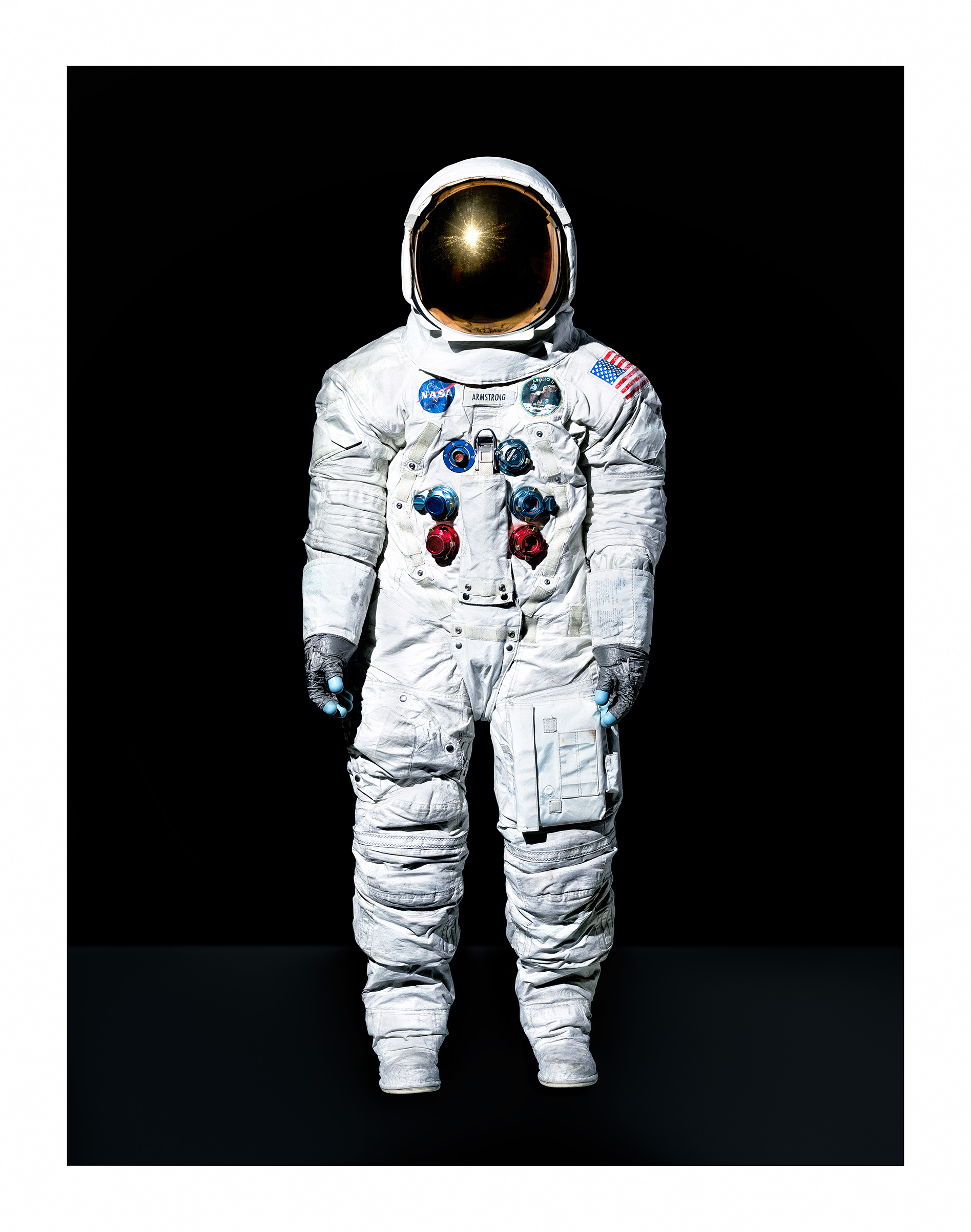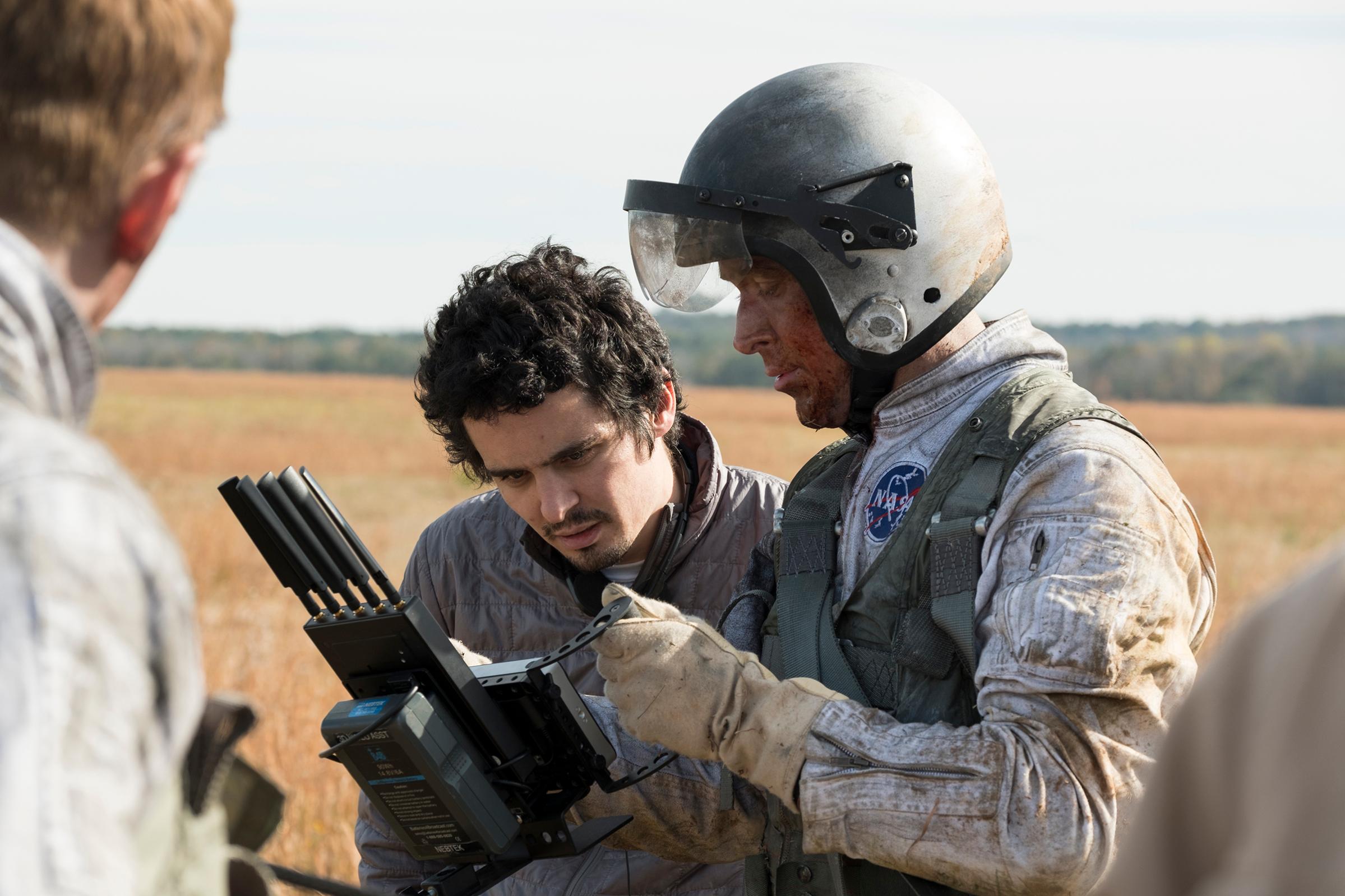
NASA didn’t talk much about the day it nearly killed Neil Armstrong–and that was smart. It was just over a year before Armstrong was set to become the first man on the moon, in command of Apollo 11, and while he hadn’t been officially tapped for the gig yet, he was on the short list and everyone knew it. Worse, NASA already had recent blood on its hands, after the fire in the Apollo 1 spacecraft that killed three astronauts just the year before.
So things were kept relatively quiet on the May day in 1968, when Armstrong was flying a training mission in the Lunar Landing Research Vehicle (LLRV)–a four-legged machine about the size of a small truck meant to simulate the actual lunar module–and just 200 ft. aboveground, it started to spin out of control. Armstrong fought to stabilize it, had no luck and with two seconds to go before the LLRV crashed, he ejected, blasted away and descended by parachute–passing directly through the oily plume of black smoke the lander produced when it smashed into the Texas scrub.
As other Apollo astronauts recall it, Armstrong was back at his desk within the hour, wordlessly working on the accident report. As the scene is grippingly depicted in the new Armstrong biopic First Man–based on the book by James R. Hansen and directed by Damien Chazelle with his La La Land star Ryan Gosling as Armstrong–he made a brief stop at home first, where he cleaned up and gulped iced tea before dashing back out. Both versions capture the man.
“Neil didn’t stop,” says Chazelle, joined by Gosling for lunch at a Los Angeles café. “He crashes the thing and he’s bloody-faced, talking with the other guys, and then he’s walking and they’re trying to stop him and they can’t. He was making this headlong rush to the moon.”
Armstrong did not rush alone. He was just the point man for the 400,000 people who worked in the great lunar push of the 1960s and who were, themselves, the leading edge of a nation of 200 million who had accepted President Kennedy’s 1962 challenge to have Americans on the moon by the end of the decade. The country met the challenge, sticking the landing on July 20, 1969.
It is now going on 50 years since Armstrong flew, and a movie about a figure like him and an accomplishment like Apollo 11 comes at an odd and instructive time. It’s an era of split screens and bellowed opinions, of online exhibitionism and self-celebration. The office occupied by Kennedy, who threw down the lunar gauntlet, is now occupied by President Trump, whose throwdowns are more personal. The anonymous engineers who built the Saturn V rocket have been replaced by the impulsive Elon Musk, who makes both cars and rockets–and also all manner of messes with his tweets and outbursts that are quintessentially 2018.
None of that was Armstrong. It was one of history’s bits of wicked mischief that for millennia, humanity had a job opening it dreamed of filling–“first man on the moon”–which called for a person who would be comfortable living in the white-hot light of fame that would be trained on him for the rest of his life. What it got instead was a man who was less morning glory than night phlox–a flower that closes in the sunlight and opens after dark.
That was part of the challenge that Chazelle faced–making a compelling movie about a man who was taciturn, remote, more inclined to deflect praise than accept it. In an earlier era, Gary Cooper would have played the part; in this era, Gosling got the nod, and he knew it would not be easy.
“Neil was a very, very layered person,” he says. “Extremely humble, extremely knowledgeable. He had this great depth of character–though those things are not easy to externalize.” Gosling does externalize, with a wonderfully taut minimalism. “It helped a lot that we have Ryan,” says screenwriter Josh Singer. “Ryan can live in the small.”
Part of Armstrong’s temperamental austerity was born of profound sorrow. (Multiple spoilers follow.) It was the sorrow of one of his first and closest astronaut friends, Elliot See, dying in a crash of his T-38 jet. It was the sorrow and the horror of the Apollo 1 fire that killed astronauts Gus Grissom, Ed White and Roger Chaffee in January 1967. And it was the sorrow, most terribly, that Armstrong and his wife Jan (played by Claire Foy) bore when their 2-year-old daughter, Karen, died of brain cancer. That happened before Armstrong even joined the space program, but it may have been one of the things that pushed him there.
“It’s the kind of loss that can drive you across the cosmos,” Chazelle says.
Armstrong did cover that cosmic distance. He made the great journey and took the great steps. The triumph of Chazelle’s film is that it doesn’t just tell us the story of that mission, which we know very well–but the story of a man we barely know at all.

First Man, like other space movies before it, is filled with magnificent machines. The re-creation of the two-man Gemini spacecraft, which has never made a notable appearance in a major film before, is faithful to the last switch and warning light. The Saturn V rocket, which we’ve seen onscreen before, has never looked so real or so glam.
“They had a 20-ft.-tall Saturn V model that was absolutely fantastic. I tried to steal the damn thing,” jokes Al Worden, Apollo 15 lunar astronaut, who worked as an on-set consultant.
But First Man wants us to fear the machines too. The movie opens with a horror-show flight Armstrong took in an X-15 rocket plane in 1961. It is shot brutally, claustrophobically, with the viewer trapped inside the tiny cockpit as the plane shakes wildly and the engine roars deafeningly. Armstrong flies more than 20 miles into the stratosphere and all at once realizes he can’t come down again, as the plane begins “ballooning,” or bouncing off the top of the atmosphere. It’s an early lesson in the wages of hubris and the stakes of the movie: you can leave the Earth, but don’t be so sure you’ll be allowed to return. Chazelle ensures we feel both the fear and the violence.
“I hope the scene gets turned into a ride at Universal at some point,” Gosling says. “I don’t remember much from the shoot. I just remember Damien screaming, ‘More shaking! More shaking!'”
Something similar is true of the scene of Armstrong’s Gemini 8 mission, during which a stuck thruster led to a high-speed spin that required an emergency abort. And it happens again in the terror of the Apollo 1 fire, which Chazelle smartly shot in close to real time, with barely 20 seconds elapsing from the moment of first spark to the death of the crew. It was across those tiny temporal divides that space heroes could go from cockpit to coffin.
“For three of the best and the brightest to be extinguished in that amount of time,” Chazelle says. “To me the important thing was to emphasize the speed.”
If Armstrong was confident he could handle the temperamental machines, what caused him more problems were the humans who inconveniently populate the world along with the hardware. After the funeral for his friend See, he stays only so long at the neighborhood gathering in one of the astronauts’ homes before escaping to the quiet of his own backyard, where he gazes up at the stars. His friend White–whom we don’t yet know is a member of the walking dead himself–follows him and tries to coax him back inside.
“You think I’m standing out here in the backyard ’cause I wanna talk to somebody, Ed?” Armstrong snaps.
It fell to Jan Armstrong in real life, and to Foy in the film, to serve as a sort of land bridge between the larger world of friends and family, and the island nation that was Armstrong. The night before he leaves his Houston home to fly to Cape Canaveral and from there to the moon, he busies himself packing–packing too much and too slowly–because as long as he’s engaged in that mundane business, he has a chance of waiting out his sons–Rick, 12, and Mark, 6–in the hope that they’ll go to bed and he can avoid what could be his last goodbye. Foy, as Jan, is having none of it.
“You’re gonna sit them down now, both of them, and you’re gonna prepare them for the fact that you might not ever come home,” she demands. “You’re doing that. You. Not me. I’m done.”
And so he does, in his fashion. He gathers the family around the dining-room table and, in a scene built less of speech than of silence, tries his best to be open with his sons.
“Do you think you’re coming back?” Rick asks.
“We have real confidence in the mission,” Armstrong answers. “There are risks, but we have every intention of coming back.” Mark hugs his father, but Rick merely shakes his hand.
“I remember the meeting,” Mark says today, “because we rarely ever met in the dining room. I came away from the meeting very confident that Dad was just going on another mission and I’d see him on the other side.” If the famous Armstrong reserve is heritable, it’s captured in Mark’s use of so clinical a word as meeting.

Neil Armstrong may have measured out his warmth and humanness in coffee spoons, but he had his moments and the movie shows them. There’s a sweet scene of horseplay with the boys, with Armstrong chasing them around the house, scooping one up and announcing triumphantly to Jan, “I got one!” as if he were catching puppies. There’s the deadpan wit he wields in a single line he directs at his Apollo 11 crewmate Buzz Aldrin–whose blunderbuss bluntness was the temperamental opposite of Armstrong’s studied quiet.
I observed both sides of Armstrong up close and at length, during a 12-day morale tour of military bases in the Middle East in 2010 that featured Armstrong; Jim Lovell, the commander of Apollo 13; and Gene Cernan, the commander of Apollo 17. There were dozens of people in our traveling party, and Armstrong would chat when he had to, read when he was allowed and light up mostly when he was onstage, addressing servicemen and servicewomen young enough to be his children or even grandchildren, or in the back of the bus with Lovell and Cernan, sharing stories and laughing at inside jokes so deeply inside that only the 21 others who flew to the moon would get them.
If First Man is a movie we can appreciate at our current hinge point in history, it’s not entirely clear that it’s a movie we deserve. The America that sent nine crews of astronauts to the moon was a politically riven one, just as the current America is. But the battles that were fought concerned profound issues–the Vietnam War, civil rights.
Many of the battles we fight in 2018 are rather less consequential. Indeed, one ensnared First Man itself. The portion of the film that takes place on the lunar surface is faithful to the actual landing–in pacing, in language, in Armstrong’s movements as he took the epochal steps. It is faithful too in a private moment he spent, a few dozen yards away, at a formation called Little West Crater. What happens there is a perhaps invented, perhaps authentic grace note for Armstrong’s character. (According to Hansen, the Armstrong family believes that something very similar to what we see on the screen may indeed have occurred.) Either way, the scene brings us back to the heart and the heartbreak that were Armstrong.
But no sooner were early screenings held than a storm of outrage erupted over the fact that the lunar flag-raising scene was not included. That First Man is practically a valentine to America, that it is fairly festooned with flags in every other scene, did not seem to matter.
The Apollo program itself did not escape the politics of its time. First Man includes a montage of peace and civil rights rallies from the era that took direct aim at NASA. The scene is set to the 1970 recording of “Whitey on the Moon,” by African-American jazz poet Gil Scott-Heron:
I can’t pay no doctor bill
(But Whitey’s on the moon)
Ten years from now I’ll be payin’ still
(While Whitey’s on the moon)
Was all that money I made last year
(For Whitey on the moon?)
How come there ain’t no money here?
(Hm! Whitey’s on the moon)
Scott-Heron’s questions are pointed, and they remain relevant. A nation does make choices about how to spend its money, and while America still has a space program, it still has plenty of people who can’t pay their doctor bills too.
But budgetary decisions frame more abstract questions as well–involving who, as a nation, we want to be; where, as a nation, we want to plant our literal or metaphorical flag. We chose, in the 1960s, to plant it on the moon, and we continue to plant it in space today–carried by explorers who are no longer all white, all male. First Man makes a bracing case for why that can be the right choice–and why Armstrong, a man who suffered long yet carried on, was the right person to lead us.
More Must-Reads from TIME
- Donald Trump Is TIME's 2024 Person of the Year
- Why We Chose Trump as Person of the Year
- Is Intermittent Fasting Good or Bad for You?
- The 100 Must-Read Books of 2024
- The 20 Best Christmas TV Episodes
- Column: If Optimism Feels Ridiculous Now, Try Hope
- The Future of Climate Action Is Trade Policy
- Merle Bombardieri Is Helping People Make the Baby Decision
Write to Jeffrey Kluger at jeffrey.kluger@time.com